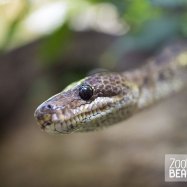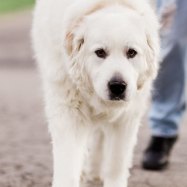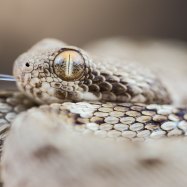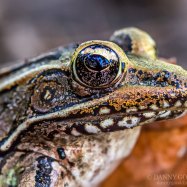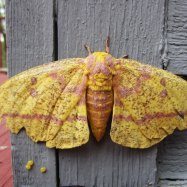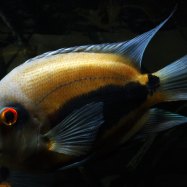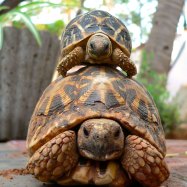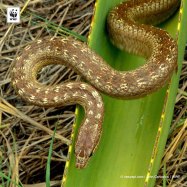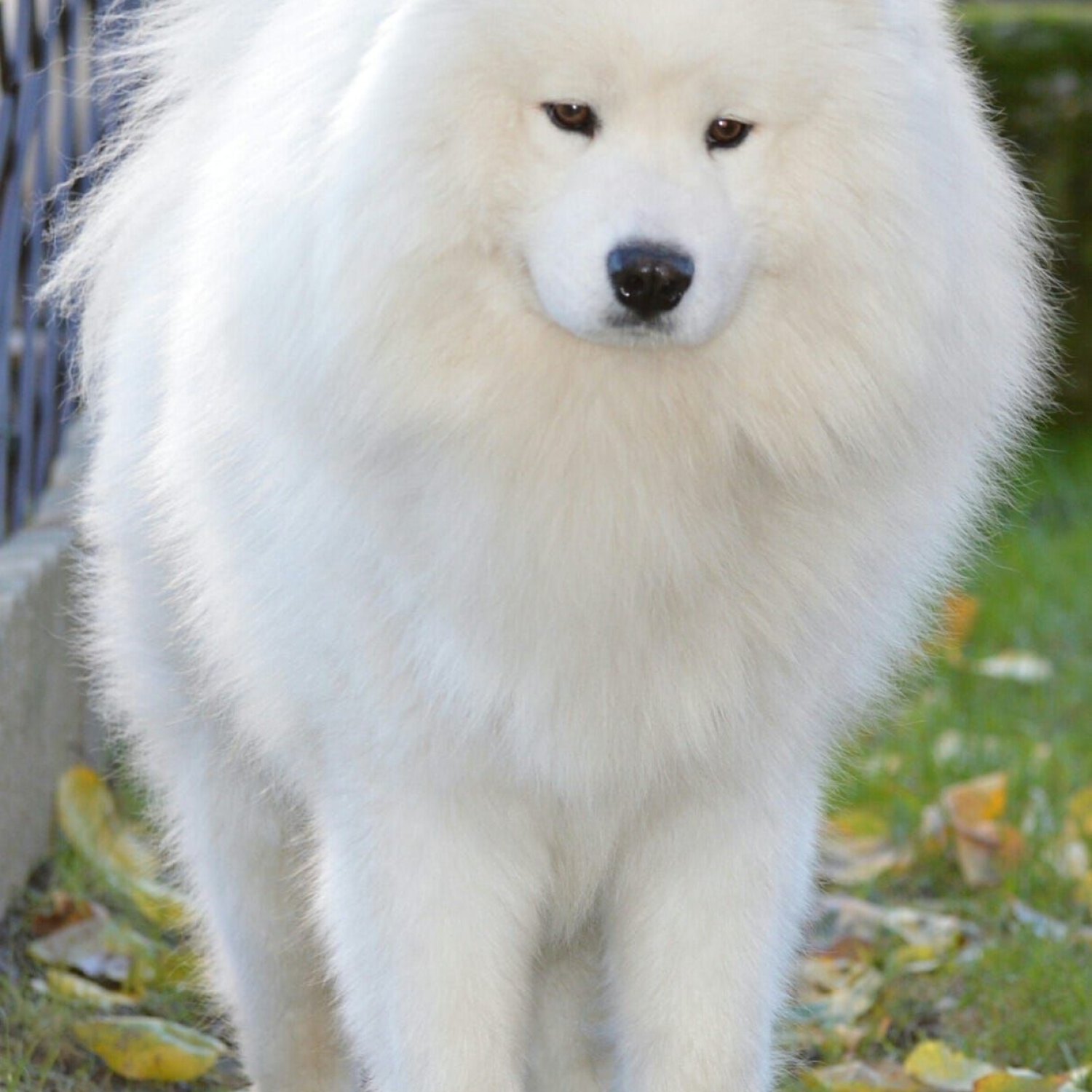
Samoyed
51-60 cm
The Samoyed, a medium-sized muscular dog, is named after the Samoyedic people in northern regions. They are part of the Canidae family and can grow up to 60 cm in length. Known for their friendly demeanor and thick white fur, the Samoyed is a popular choice for families looking for a loving and loyal companion. #Samoyed #Canidae #NorthernRegions #DogLovers
Animal Details Summary:
Common Name: Samoyed
Kingdom: Animalia
Habitat: Arctic and subarctic regions
The Loyal and Beautiful Samoyed: A True Companion from the Arctic Regions
For centuries, humans have been fascinated by the different species of animals that inhabit our planet. From the smallest insect to the largest mammal, each of them has its own unique characteristics and abilities. Among the many remarkable animals, the Samoyed stands out not only for its beauty but also for its exceptional qualities as a companion. Let's delve deeper into the world of the Samoyed and discover what makes them truly special Samoyed.The Samoyed's Origins and Physical Characteristics
The Samoyed, also known as the Bjelkier, is a breed of dog that originated from the northern regions of Russia, specifically from the Samoyedic people, who used these remarkable animals for a variety of purposes. They were known as excellent herding and sled dogs, as well as companions for the Samoyedic tribes.One of the most striking features of the Samoyed is its stunning appearance. They have a thick, fluffy coat that comes in different shades of white, cream, and biscuit. This dense coat not only protects them from the harsh Arctic climate but also adds to their charm. Their rounded ears and dark, almond-shaped eyes give them a friendly and approachable look. The Samoyed has a medium-sized body, with a muscular frame, and can grow up to 60 cm in length and weigh between 20-30 kg.
The Samoyed's Strong Bond with Humans
The Samoyed is known for its friendly and sociable nature, making them popular among dog lovers. They have a natural instinct to be around humans, making them excellent companion dogs Sea Spider. They are highly affectionate and thrive on being in the company of their owners. This breed is loyal and protective of their loved ones, making them an ideal pet for families with children.Their friendly temperament also makes them suitable for therapy and service work. They have been trained as therapy dogs for people with disabilities, as well as emotional support animals for those struggling with mental health issues. Their gentle nature and calming presence have been proven to have a positive impact on humans, further solidifying their reputation as a truly remarkable breed.
The Samoyed's Intelligence and Trainability
Beyond their physical beauty and charming personality, the Samoyed is also known for its intelligence and eagerness to learn. They are easily trainable and have been used for various tasks over the years, such as sled pulling, herding, and guarding. These dogs have an innate drive to please their owners and are always looking for ways to be useful.Their intelligence and trainability also make them an excellent choice for dog sports such as agility and obedience. They excel in these activities, showcasing their athleticism and mental agility. Their high energy levels mean they require regular exercise and mental stimulation to keep them happy and healthy.
The Samoyed's Habitat and Distribution
The Samoyed's original habitat is the harsh, cold Arctic and subarctic regions of Russia. They are adapted to survive in extreme weather conditions and have a thick double coat to protect them from the cold. Despite their origins, this breed has gained popularity worldwide and can now be found in many countries as pets and working dogs.Carnivorous Diet and Health
As a member of the Canidae family, the Samoyed is classified as a carnivore, meaning their diet consists mostly of meat. However, they do require a balanced and nutritious diet to maintain optimal health. As with any breed, it is essential to consult a veterinarian to determine the best diet for your Samoyed, based on their age, size, and activity level.This breed is generally healthy with a life expectancy of 12-14 years. However, they are prone to certain health conditions, including hip dysplasia, progressive retinal atrophy, and diabetes, which can be managed with proper care and regular visits to the vet.
The Samoyed's Impact on the Environment
As a domesticated breed, the Samoyed does not have a significant impact on the environment. However, their origin and natural habitat are closely linked to the Arctic regions, which are facing numerous environmental challenges. Climate change, melting ice, and loss of habitat are affecting not only the Samoyed but also many other species that call this region home.As responsible pet owners, we can all do our part in minimizing our pets' environmental impact by being conscious of our consumption and supporting conservation efforts.
The Future of the Samoyed
The Samoyed has come a long way from being a working dog for the Samoyedic people to becoming a beloved companion and therapy dog. Their intelligence, loyalty, and charming personality have won the hearts of many, making them a popular breed globally. However, responsible breeding and care are crucial in ensuring the Samoyed's future.With the rise in popularity of designer breeds and irresponsible breeding practices, the Samoyed's purity and health are at risk. It is essential to do thorough research and purchase from reputable breeders to ensure that we are preserving the breed's integrity and improving its health.
In conclusion, the Samoyed is more than just a beautiful dog breed. They are intelligent, loyal, and loving companions, with a rich history and a bright future ahead. As we continue to learn more about these remarkable animals, we must also do our part in preserving their habitat and health. The Samoyed truly embodies the saying, "man's best friend" and will undoubtedly continue to captivate us with their beauty and exceptional qualities for many years to come.

Samoyed
Animal Details Samoyed - Scientific Name: Canis lupus familiaris
- Category: Animals S
- Scientific Name: Canis lupus familiaris
- Common Name: Samoyed
- Kingdom: Animalia
- Phylum: Chordata
- Class: Mammalia
- Order: Carnivora
- Family: Canidae
- Habitat: Arctic and subarctic regions
- Feeding Method: Carnivorous
- Geographical Distribution: Worldwide
- Country of Origin: Russia
- Location: Northern regions
- Animal Coloration: White, cream, biscuit
- Body Shape: Medium-sized, muscular
- Length: 51-60 cm
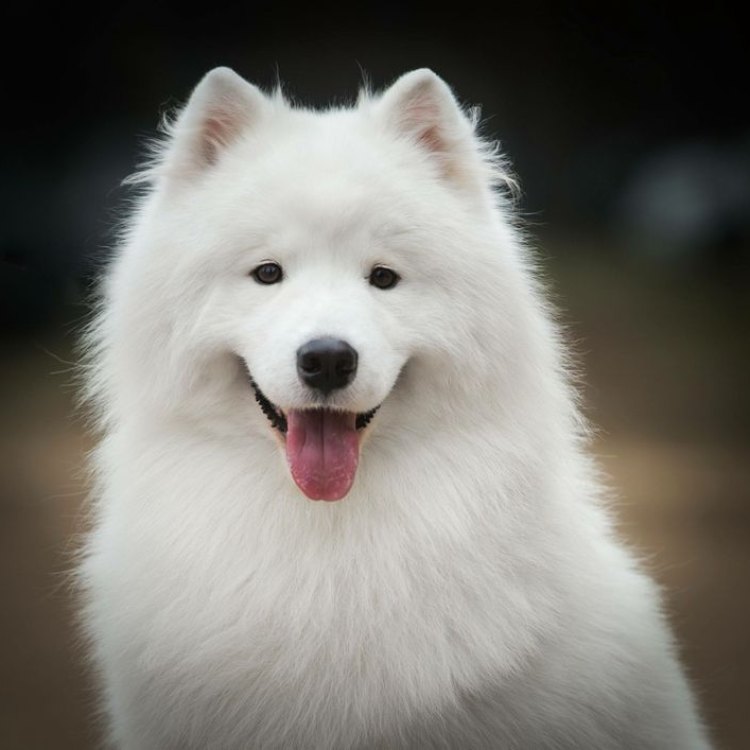
Samoyed
- Adult Size: Medium
- Average Lifespan: 12-14 years
- Reproduction: Sexual
- Reproductive Behavior: Seasonal breeding
- Sound or Call: Barking
- Migration Pattern: Non-migratory
- Social Groups: Pack
- Behavior: Friendly, affectionate, intelligent
- Threats: None in particular
- Conservation Status: Not endangered
- Impact on Ecosystem: N/A
- Human Use: Companion dog
- Distinctive Features: Thick double coat, curled tail
- Interesting Facts: Samoyeds are known for their smiley expressions and are often called "smiling dogs". They were originally bred by the Samoyede people of Siberia to herd reindeer and pull sleds in icy conditions.
- Predator: No natural predators
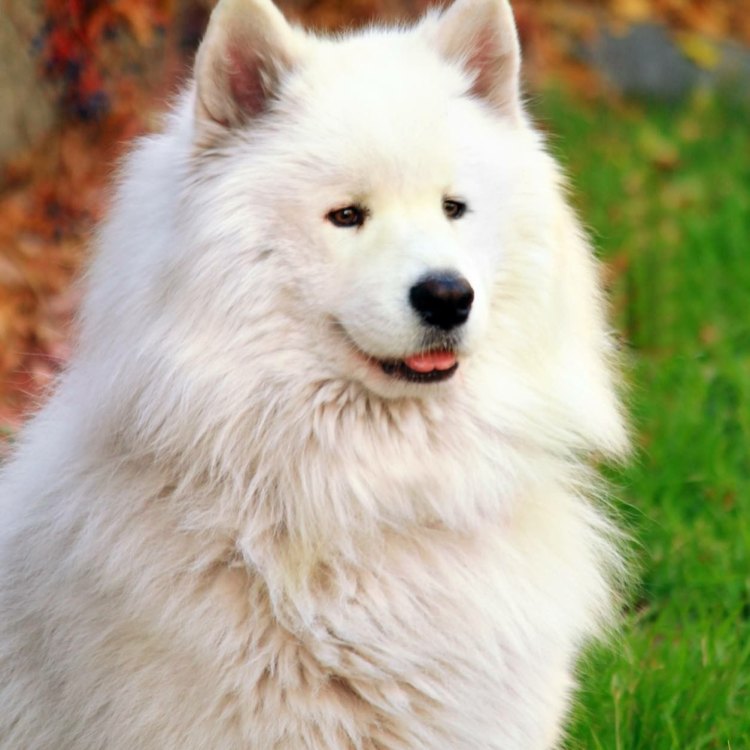
Canis lupus familiaris
The Loyal and Smiling Samoyed: A Guide to the Fascinating Arctic Dog
The Samoyed, with its stunning white coat and smiling face, is a familiar and beloved breed among dog lovers. Their playful and friendly nature has earned them the nickname "smiling dogs" and they have become increasingly popular as companion dogs worldwide. But beyond their charming looks, these dogs have a long and intriguing history, and possess unique characteristics that make them stand out among other breeds. Let's take a deeper look into the world of the Samoyed PeaceOfAnimals.Com.Adult Size: Medium
The Samoyed belongs to the medium-sized dog category, with an average weight of 44-66 pounds and a height of 19-23 inches at the shoulder. They have a sturdy and well-proportioned body, built for endurance and agility. This size makes them perfect for families, as they are not too big to live in a smaller space but still have enough energy for outdoor activities.
Average Lifespan: 12-14 years
Samoyeds have a relatively long lifespan compared to other breeds, with an average lifespan of 12-14 years. Of course, this can vary depending on the individual dog's health and well-being. As with any breed, it is important to provide proper care, nutrition, and regular veterinary check-ups to ensure your Samoyed lives a long and healthy life.
Reproduction: Sexual
Samoyeds, like most canines, reproduce sexually. Male and female dogs have different reproductive organs and mating results in the production of offspring. Samoyeds have a gestation period of around 63 days and can have an average litter size of 4-6 puppies Sarcosuchus. It is important to spay or neuter your Samoyed if you do not plan on breeding, as it not only prevents unwanted pregnancies but also has several health benefits for your dog.
Reproductive Behavior: Seasonal Breeding
Samoyeds have a seasonal breeding behavior, which means that they are only sexually active during certain times of the year. This usually occurs in the fall or winter months, which aligns with their natural breeding season in their native Arctic climate. This behavior is triggered by changes in daylight and temperature, as well as factors like food availability and readiness for mating.
Sound or Call: Barking
Samoyeds are known for their signature bark – a loud, deep, and distinctive sound. It is their primary form of vocalization, used to communicate a range of emotions such as happiness, alertness, or even boredom. However, excessive barking can also become a nuisance, so it is important to properly train your Samoyed to control their bark.
Migration Pattern: Non-migratory
As a breed originally bred in the frigid north, Samoyeds have adapted to the harsh Arctic climate and do not have a migratory pattern like some other animals. They are well-equipped to handle the cold temperatures and are primarily land animals, relying on their thick coats and hunting skills for survival. However, with their growing popularity as pets, Samoyeds can now be found in all corners of the world, adapting to different climates and lifestyles.
Social Groups: Pack
Samoyeds are pack animals and have a strong sense of social hierarchy. This is a result of their history as working dogs, where they had to cooperate and live closely with other dogs in their pack. As pets, they continue to have this instinct, making them highly sociable and enjoying the company of both humans and other dogs. This is also one of the reasons why Samoyeds are not recommended for households where they have to be alone for extended periods.
Behavior: Friendly, Affectionate, Intelligent
One of the most endearing qualities of Samoyeds is their friendly and affectionate nature. They thrive on attention and love nothing more than being with their human companions. They are also known for their intelligence and are quick learners, making them easy to train. However, they can also have a stubborn streak, so consistency and patience are key in their training.
Threats: None in Particular
Unlike many other animals, Samoyeds do not face any particular threats in the wild. In fact, they lived alongside humans for centuries, and their gentle nature and willingness to work made them indispensable companions in harsh environments. As pets, they do not have natural predators to worry about, and their biggest threat is often their own curiosity and adventurous spirit.
Conservation Status: Not Endangered
The Samoyed breed is not endangered, and in fact, they have become quite popular as pets around the world. However, it is important for owners to be responsible and informed, as overbreeding can contribute to health issues and negatively impact the breed's welfare. It is always advisable to adopt from a reputable breeder or rescue organization to ensure the wellbeing of these wonderful dogs.
Impact on Ecosystem: N/A
As domesticated animals, Samoyeds do not have a significant impact on the ecosystem. However, their ancestors played an important role in the lives of the Samoyede people, helping them with hunting, herding, and transportation. In their natural habitat, they also help maintain the balance of local wildlife populations and contribute to the biodiversity of the Arctic region.
Human Use: Companion Dog
The primary use of Samoyeds in modern times is as companion dogs. Their friendly and playful nature, along with their trademark smile, make them perfect for families and individuals looking for a loyal and loving pet. They also excel in activities such as canine sports and therapy work, showcasing their versatility and adaptability.
Distinctive Features: Thick Double Coat, Curled Tail
One of the most distinctive features of Samoyeds is their thick and luxurious double coat. This coat is made up of a soft and fluffy undercoat, which provides insulation, and a longer, coarser outer coat that acts as a waterproof layer. This coat, along with their curled tail, has been essential for their survival in freezing temperatures and is a defining characteristic of the breed.
Interesting Facts: The Smiley Samoyed
Samoyeds are often called "smiling dogs" due to their natural appearance of a perpetual grin. This is because their lips curve upwards at the corners of their mouths, giving them a smiley expression. This unique feature not only adds to their charm but also serves a practical purpose – helping to prevent drooling while working in the bitter cold.
Predator: No Natural Predators
Samoyeds are not native to any wild environment and as a domesticated breed, they do not have natural predators. However, as with any pet, it is important to keep them safe and supervised, especially in areas where there may be roaming predators such as wolves or bears.
In conclusion, the loyal and smiling Samoyed is more than just a fluffy and lovable pet. They have a fascinating history and possess unique characteristics that make them stand out among other breeds. As they continue to bring joy and companionship to families around the world, it is important to remember to provide them with the proper care, training, and love they deserve.
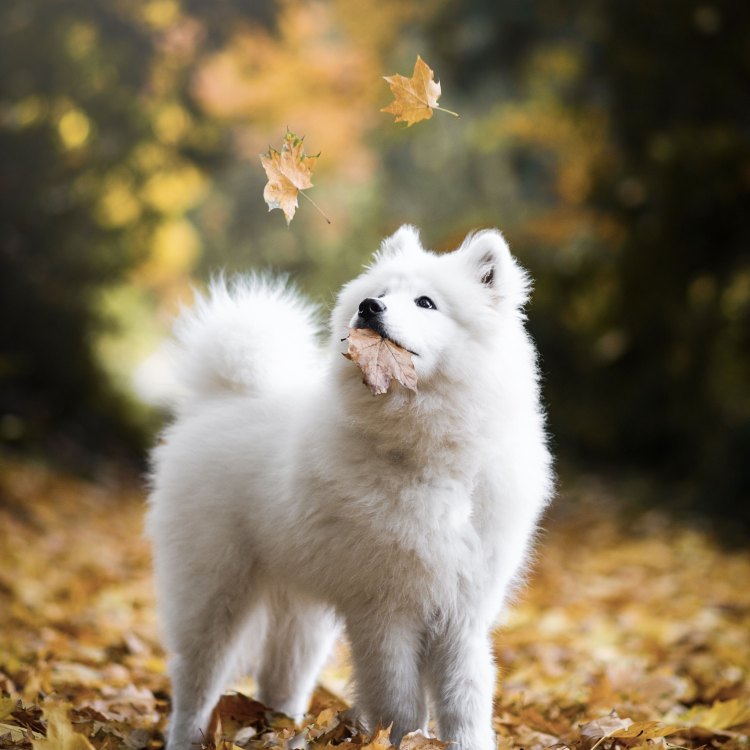
The Loyal and Beautiful Samoyed: A True Companion from the Arctic Regions
Disclaimer: The content provided is for informational purposes only. We cannot guarantee the accuracy of the information on this page 100%. All information provided here may change without prior notice.


